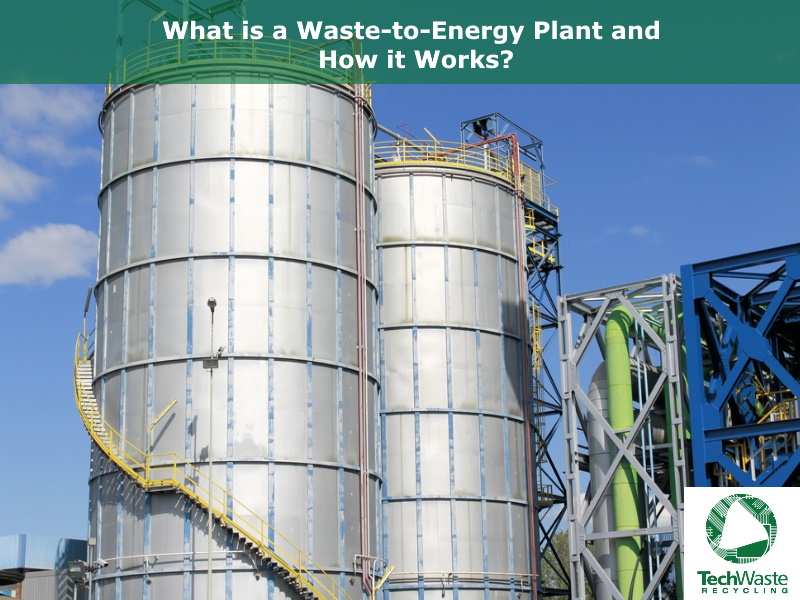A waste-to-energy plant combusts municipal solid waste (MSW) as part of waste management to generate boiler steam to produce electricity. The average range of resulting electrical energy that can be generated by a waste-to-energy plant is from 500 to 600 kWh of electricity per ton of burnt waste. The burning of approximately 2,200 tons of waste each day will result in the production of 1200 MWh of electrical energy.
How Does a Waste-to-Energy Plant Work?
The following are the 7 steps in electricity production in a waste-to-energy plant.
- Garbage is deposited into a large pit by garbage trucks.
- Waste is gathered and deposited in a burning chamber by a crane claw.
- The burning garbage (fuel) produces heat.
- Heat transforms water into steam inside the boiler.
- The high-pressure steam is used by a turbine generator to turn its blades, generating electricity.
- Prior to being released through a smoke stack, the combustion gas is cleaned by an air pollution control system.
- Ash is gathered from the air pollution control system and the boiler.
What are the Benefits of a Waste-to-Energy Plant?
Waste-to-energy plants provide an alternative source of energy while contributing less to air pollution, and reducing greenhouse gas emissions (GHG) such as carbon and methane. By burning waste, the use of landfills is minimized with waste-to-energy plants. Metals and mixed materials may also be collected post-combustion which promotes resourceful recycling of waste.
Which Countries Utilize Waste-to-Energy Plants?
Europe remains at the top spot in being the largest and most developed region in utilizing waste-to-energy plants mainly due to the EU Circular Economy Package released in January 2018 which mandates a 65% decrease of MSW deposited in landfills by 2030. Sweden and Denmark are the leading European countries using waste-to-energy plants. Other countries that make use of waste-to-energy plants include the United States, China, Japan, Taiwan, and Singapore.
Related Terms:


































